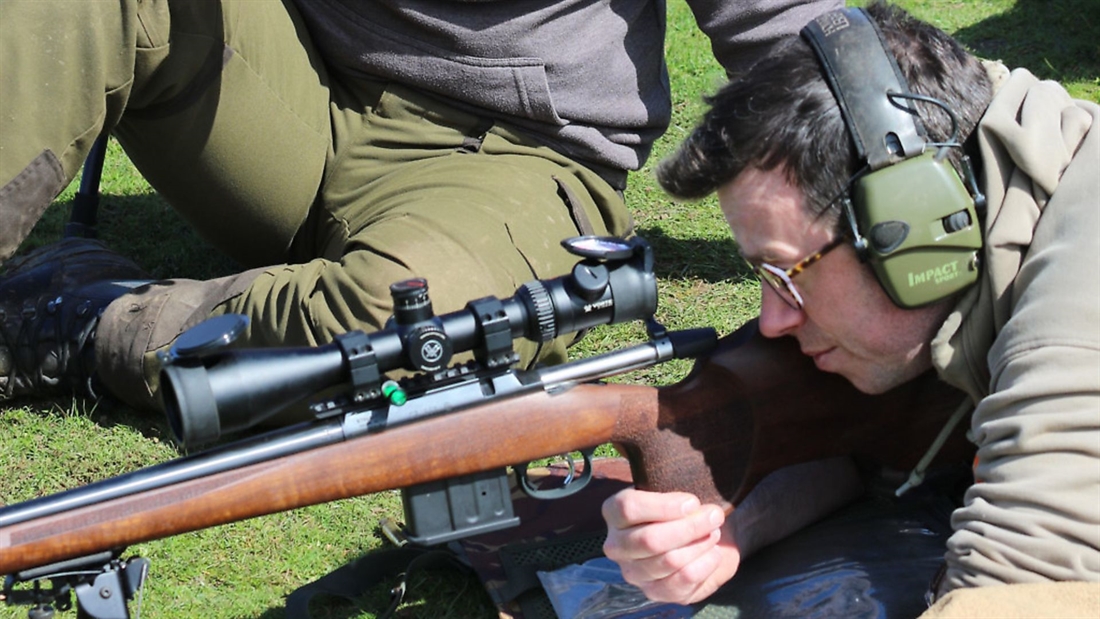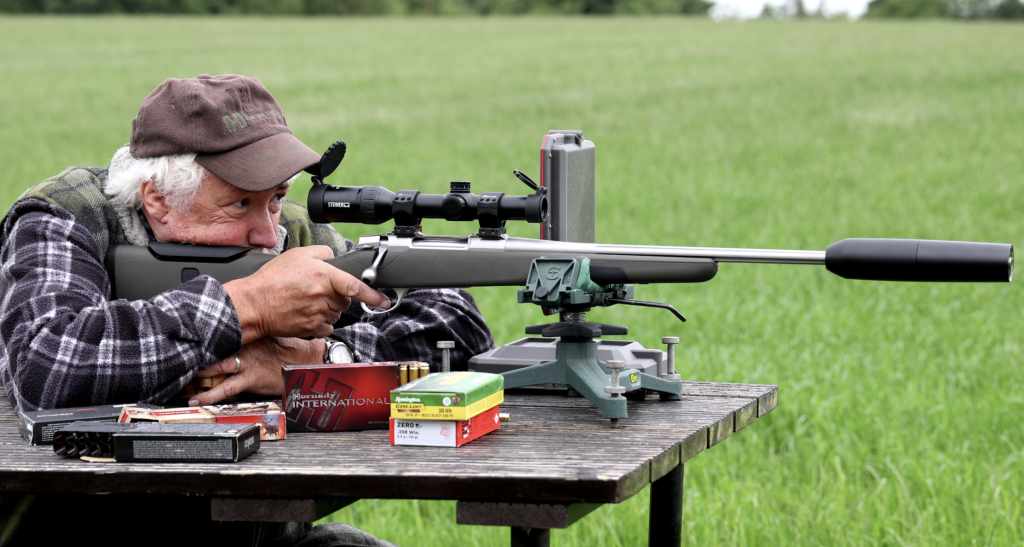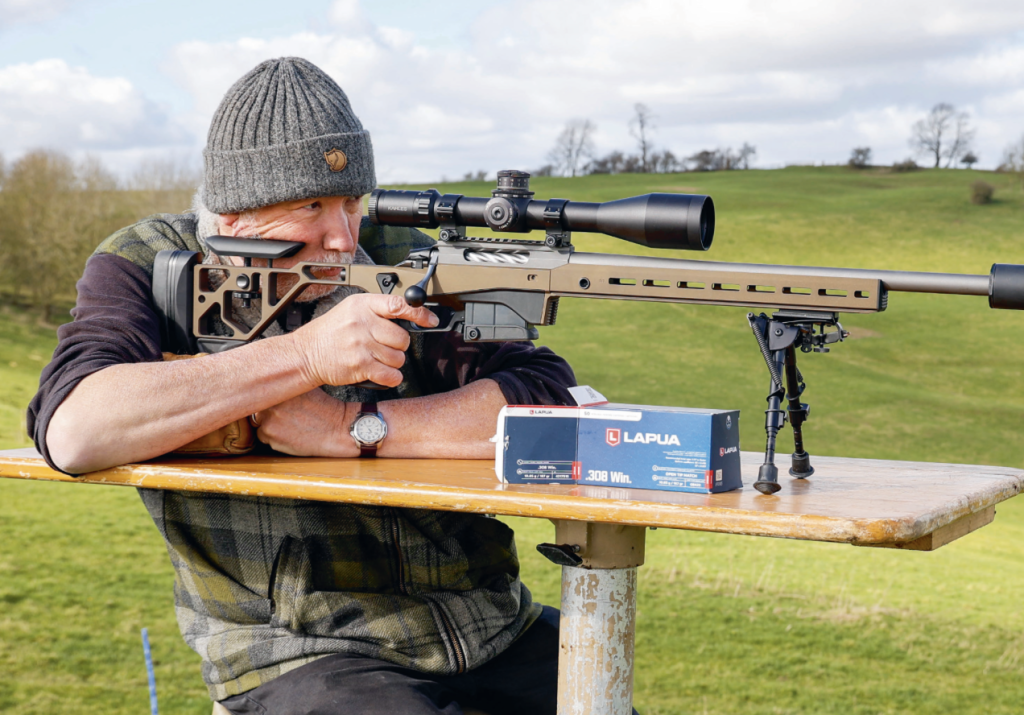Ditch the flinch!

Chris Parkin offers advice on a common problem – flinching! You may be surprised to learn it is not always due to recoil anticipation…
Q: I’m having problems with starting to flinch, nothing to do with recoil but my body just seems to twitch regardless of my shooting position and how well my gun is supported. Can you offer any advice?
CHRIS PARKIN replies: After you have got your shooting kit set up correctly with a totally stable or at best improvised shooting position, the greatest problem I believe a shooter can have is what I call the ‘now’ moment. This is where they just pull the trigger when the crosshairs are where they hope the bullet will go.
Most instructors will tell you of the importance of a good trigger squeeze and following through, but I think this avoids the seemingly frightening concept of allowing the shot to ‘break’ when it is ready to, and not so much when you are.
I came to rifle shooting from archery, a technically far harder competitive environment, where flinching or shot prediction would involve an arrow flying way off target or, worse still, the whole drawn bow collapsing toward the shooter – a whole bunch of metal in your face!
The concept we followed to address this was keeping pressure on the bow’s release aid/trigger as part of the pressure being applied to the draw weight of the string itself. This became part of our shot routine so that when the trigger ‘tripped’ under gradually increasing pressure or squeeze, and the string released, the arrow flew linearly forward, and we automatically, unconsciously performed a follow through. Everything was a linear release of the tension, so we avoided fishtailing arrows and other inconveniences.
So how does this apply to rifle shooting? Well, the point is, while all that back tension and trigger squeezing was occurring, all you had to do was aim, aim and aim, everything else became subconscious. In the wind, this could be quite alarming as you got physically buffeted around, but the key thing is that you don’t spoil whatever shot you have by ruining it with a flinch. Muscle tension in your shoulder twitching against the butt of the gun, or your head popping up to watch the shot, becomes wired into you and the gun is affected. The shot needs to occur by itself in a split second of physical neutrality so by the time you realise it, it’s too late to mess it up.
Watch someone shoot in detail. As the gun fires and recoil moves the rifle, does their shoulder twitch, their finger immediately spring forward off the blade or their eyeball shut as their head springs up far too fast for comfort? Or do they seem dead on the gun, finger still on the trigger, head still on the stock and peering through the gun as if nothing happened? If it’s the latter, chances are that they have executed a perfect trigger squeeze and although they are expecting the gun to go off, and are, in fact, waiting for it to happen, all they have mentally thought is, I’m ready… squeeeeeeze BANG. Once you commit to the squeeze, you aim and aim and aim.
At first, this will feel awkward and alien, and dry firing practice is a very cheap way of dealing with this. Use your phone to video your eyeball in slow motion and if the eye closes before the gun moves, the shooter was thinking NOW, and wasn’t waiting patiently enough. As time passes, you will find your whole body becomes calmer, and while doing your dry firing practice, especially from very unstable positions like free standing, you’ll start to notice exactly where that click happened, your brain almost takes a freezeframe image of the picture it had when the shot would have gone off.
This might all seem a bit psychic mumbo jumbo, but the more you do it, the more you will feel it quenches many other technique failings that stem from having that NOW moment in your head. You will find stability and calmness improves, your natural aim will improve and you keep your head down on the stock, with less of a blink issue instantly before the gun fires (we all still blink at some point but less with decent hydration and calmness).
I spent years perfecting this and it has never let me down. Although in hectic circumstances you may find that NOW moment returns a little, and none of us are infallible, it is easier to tone it down afterwards before any type of flinching gets ingrained again.
Related Articles
Get the latest news delivered direct to your door
Subscribe to Rifle Shooter
Elevate your shooting experience with a subscription to Rifle Shooter magazine, the UK’s premier publication for dedicated rifle enthusiasts.
Whether you’re a seasoned shot or new to the sport, Rifle Shooter delivers expert insights, in-depth gear reviews and invaluable techniques to enhance your skills. Each bi-monthly issue brings you the latest in deer stalking, foxing, long-range shooting, and international hunting adventures, all crafted by leading experts from Britain and around the world.
By subscribing, you’ll not only save on the retail price but also gain exclusive access to £2 million Public Liability Insurance, covering recreational and professional use of shotguns, rifles, and airguns.
Don’t miss out on the opportunity to join a community of passionate shooters and stay at the forefront of rifle technology and technique.




